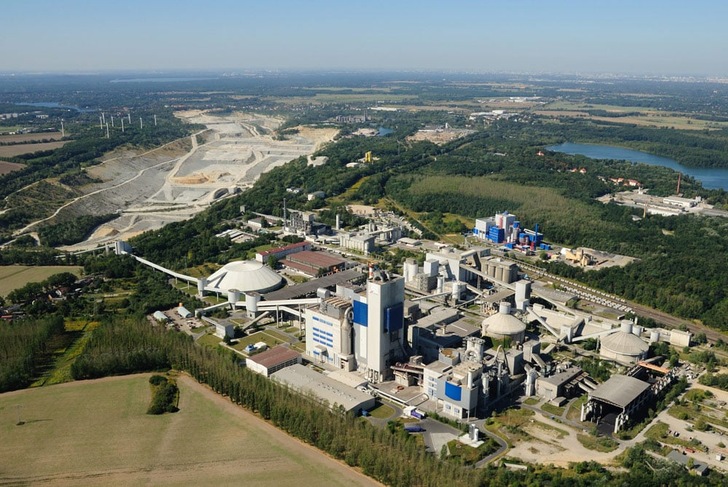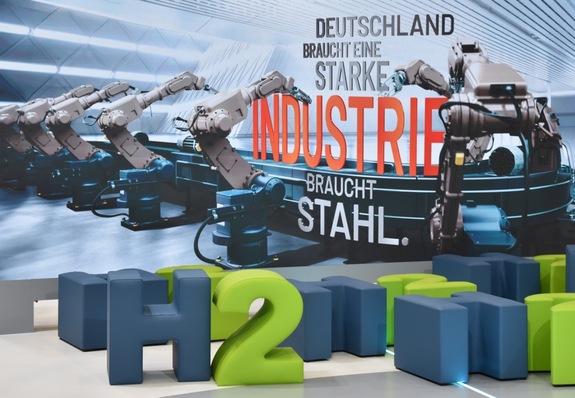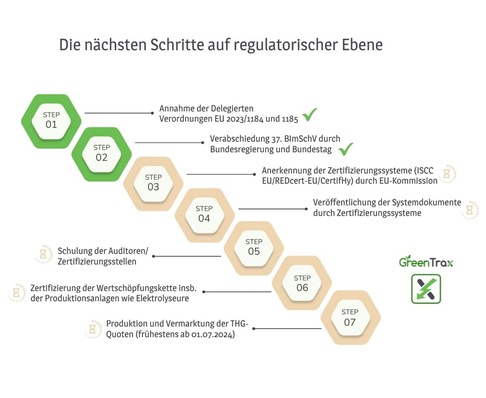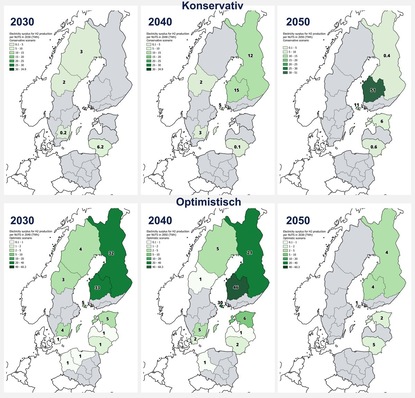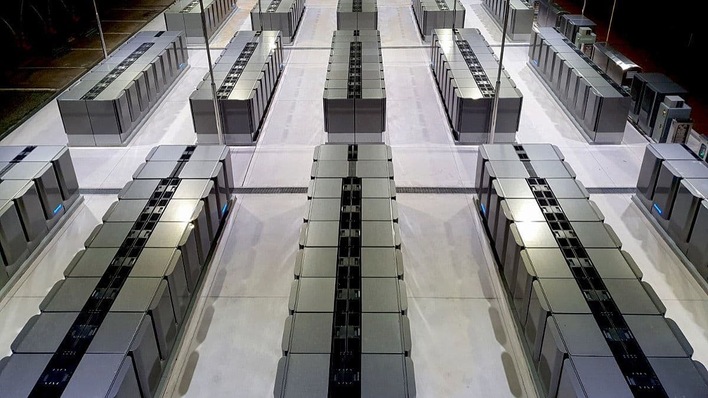More than four billion tonnes of cement are produced worldwide every year. In the process, the building material inevitably releases large quantities of the carbon dioxide bound in the lime. Cement manufacturers, such as CEMEX from Mexico, are meeting the gigantic challenge of decarbonizing the industry. A bottleneck in the development is lack of green hydrogen. The building materials manufacturer has now set ambitious targets for itself. The site in Rüdersdorf is to serve as a blueprint.
For production of green cement, it is not only the required energy that is a problem, since only one-third of the CO2 emissions originate from the energy input. Two-thirds are intrinsic to the system. These are emissions that arise in the course of cement production itself. A cement produced with purely green energy still releases huge amounts of CO2 during the production process. Businesses and researchers want to change this.
Change for the climate also means changing cement to eco-cement. Various scientists are also working on this, among them the research institute Empa in Switzerland, which is developing a CO2-negative magnesium-based cement. Building materials manufacturer CEMEX also wants to rapidly reduce its emissions. According to the company’s calculation, it is already releasing 35 percent less CO2 than in 1990, Sergio Menendez states. He is president of CEMEX Europe, Middle East, Africa and Asia. By 2030, it should be 55 percent less in Europe, and the manufacturer wants to produce only CO2-neutral concrete worldwide by 2050.
So far, however, there has been little demand for green products, CEMEX speaker Alexandra Decker laments. The company therefore has the idea of separating carbon dioxide from exhaust gas, storing it temporarily and then converting it together with H2 into synthetic fuel. Thus providing a product that is planned for in advance and producible on demand. “This is another reason why we only want to use green hydrogen,” Decker assured H2-international.
CEMEX has specifically chosen to build electrolyzers at the location in Rüdersdorf so that it can supply the factory there with hydrogen from green electricity. In this way, H2 that might be needed for other industries would also not be taken off the market. The construction would have to start in 2025/26 for the site to produce CO2-free from 2030 onwards, Decker states.
The consortium Concrete Chemicals
In order to free not only cement production but also air traffic from CO2, three companies founded the project consortium Concrete Chemicals. CEMEX, with 56,000 employees worldwide and its own locations in Germany; Sasol ecoFT, a subsidiary of chemical corporation Sasol; and Uckermark-based Enertrag plan to produce a sustainable aviation fuel that can also be used in cement production. For this, a power-to-liquid method (PtL) will come into use. CO2 and H2 are converted into syngas. The mixture of carbon monoxide and H2 is then, with the aid of the Fischer-Tropsch process, converted into longer-chain hydrocarbons to produce e-kerosene.
The project in Rüdersdorf comprises two scaling levels. First, the hydrogen will be produced on site with electricity from regional renewable energy plants. In this first stage, 15,000 tonnes of e-kerosene are to be produced annually this way. For it, 100 tonnes of CO2 per day are to be captured in Rüdersdorf, combined with 12 tonnes of H2 per day and used for PtL production. In the second stage, larger quantities of H2 are to be delivered by pipeline.
The green hydrogen will be generated as part of the IPCEI project Elektrolyse-Korridor Ostdeutschland (electrolysis corridor Eastern Germany) to build a capacity of 210 MW. This will enable the production of 35,000 tonnes of e-kerosene per year. This project also uses only renewable electricity for the production of 40 tonnes of green hydrogen per day, the consortium states, which requires that another 300 tonnes of CO2 per day be sequestered.
The partner network Doing Hydrogen
Concrete Chemicals as well as Elektrolyse-Korridor Ostdeutschland are part of the IPCEI partnership project Doing Hydrogen. During construction of the pipeline from Rostock to Sachsen, all components of an H2 value chain will be covered. The resulting transmission system is to be built by 2026, two-thirds by conversion of existing natural gas infrastructure and one-third by the construction of new complementary hydrogen lines. In this way, a starter grid with a total length of 475 kilometers will arise that connects production and use points in Mecklenburg-Vorpommern, Brandenburg, Sachsen, Sachsen-Anhalt and Berlin.
The e-kerosene is then also to be certified for use in aircraft, since no alternative propulsion systems in the aviation sector are in sight for the foreseeable future. Through PtL, fuel of exactly the same specifications as petroleum-based kerosene can be created. With this, no modification of the existing drive technologies is needed. The three companies want to meet the criteria for aviation fuel set out in the EU directive RED II. Fuel having the prescribed minimum percent of PtL kerosene to be blended can be achieved this way.
The market for e-kerosene
The EU proposal ReFuelEU Aviation represents a first step towards the decarbonization of air transport. At the same time, it should ensure the purchase of synthetic fuels such as e-kerosene. At EU level, the regulation includes a sub-quota of 0.7 percent synthetic fuel out of the required quota of sustainable fuels for year 2030. The quota is to rise to a minimum of 28 percent e-fuels by 2050. “In this way, demand is plannable and ensured,” states Enertrag speaker Matthias Philippi.
Furthermore, under the German fuel blending regulation (Beimischungsverordnung), the fuel for all aircraft refueling in Germany will need to contain at least 0.5 percent PtL kerosene starting as early as 2026, and 2 percent starting 2030. This should increase the share of renewable energy in the transport sector to 28 percent by 2030.
Cement works in Höver
Not only CEMEX and partners are working to solve the Herculean task of creating sustainable cement. In the cement works of Höver, not far from Hannover, the company Holcim is testing out an innovative technology intended to decarbonize the building material. There, Holcim, together with the two partners Cool Planet Technologies, specializing in CO2 separation, and research institute Helmholtz-Zentrum Hereon, has installed a CO2 capture plant based on an innovative membrane technology. The first step entails the gathering of practical experience with CO2 capture. After a few weeks of operation with the test system, the first results were very positive. “We were able to observe a good separation rate and comparatively high purities,” rejoiced Stephan Hinrichs, plant manager at Holcim.
The next phase of the research and development project that will span about two and a half years was planned to start in August 2022. A one-year test phase, during which a long-term operation of the plant will be examined, is scheduled to begin in September of next year. If good results are confirmed, the plant will be further expanded step by step. In the final expansion stage, around 90 percent of CO2 emissions would be captured. The resulting very pure, liquid CO2 can be stored or further processed. The goal of the Holcim team around Stephan Hinrich is to demonstrate that carbon capture can also be economically efficient on a larger scale.
Carbon2Business set on pure oxygen
Holcim has already received a grant out of the EU Innovation Fund for a project in Lägerdorf called Carbon2Business. Funding has been provided for the construction of a new kiln line in the cement works of Lägerdorf, located on the West coast of Schleswig-Holstein. A prototype that uses oxyfuel technology is being developed that should accelerate the decarbonization of cement production on an industrial scale. The CO2 captured in Lägerdorf is to serve as a raw material for other industries.
Instead of ambient air, pure oxygen is fed in for the combustion processes. The required oxygen is to be produced along with the hydrogen from electrolysis. The oxyfuel method generates highly pure CO2 gas in the cement kiln, which can then be separated and converted to methanol by reaction with hydrogen. With this, the site can avoid the emission of about 1.2 million tonnes of CO2 per year. In Lägerdorf, like in Rüdersdorf, the green fuel as a market-ready product will help advance sustainability in the cement industry.
Magnesium-based cement
Concrete production accounts for around six percent of man-made CO2 emissions worldwide. Researchers at Empa in Switzerland are striving to change this. They are currently working on a CO2-negative concrete. The basis for the eco-concrete is a magnesium-based cement. The raw material is sourced from regions where the magnesium-containing mineral olivine naturally occurs. The mineral is mainly found deep in the earth’s mantle. However, if it is transported to the earth’s surface by volcanic activity, for example in Norway, it can be mined. During the production of cement from olivine, carbon dioxide is added to the raw magnesium silicate material. Since only part of the resulting material is fired in an additional processing step, less CO2 is released during the combustion than was previously consumed. The end balance is therefore negative. The product has been named MOMS, short for “magnesium oxide derived from silicates.”
Author: Niels Hendrik Petersen


